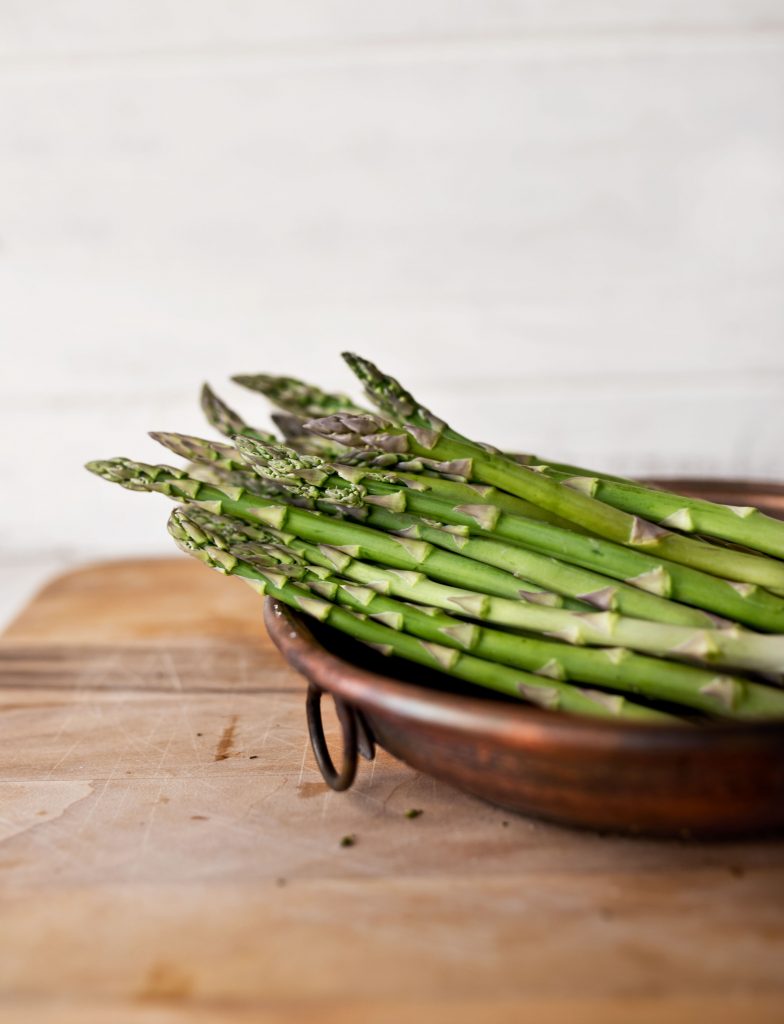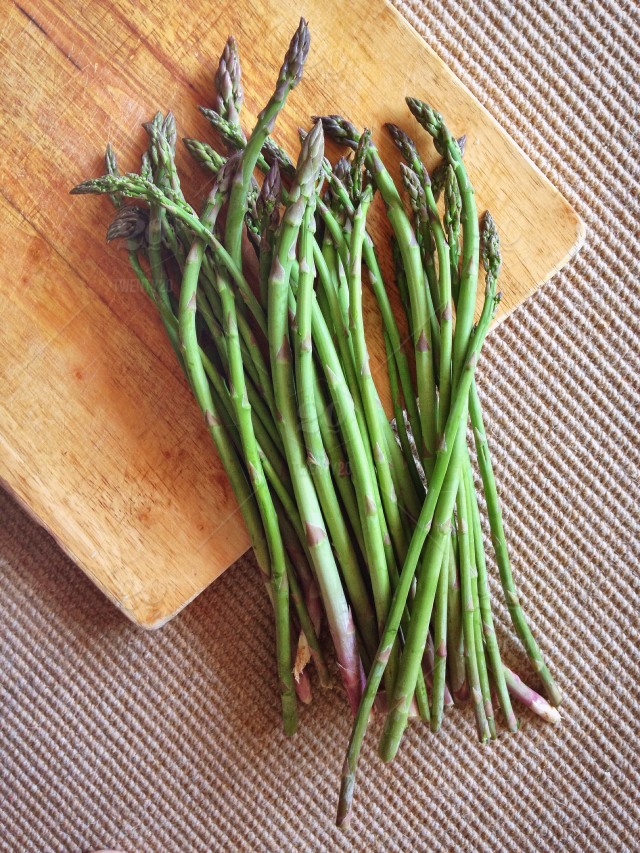You know that Spring is here when you go to the local food shop or farmer’s market and see asparagus for sale, or open a magazine or look online and see a wide variety of recipes featuring it. This is one of the first signals the at Spring is upon us, and that the weather will start to get warmer, with an occasional rainy day that is so important for those “May flowers”.

Asparagus is grown from crowns, or one year old plants. It typically takes about three years to harvest it, though it could be harvested in the second year if it is a light harvest. Asparagus is perennial, and the plants can continue to reproduce for up to twenty years, and they thrive in a cool climate. There are three varieties, green, white, and purple. The white asparagus is actually green asparagus grown without sunlight, which inhibits chlorophyll production, producing a white color as opposed to green, and is sweeter and contains less fiber than the green. Purple asparagus turns green once cooked and is bred to be purple.

There are many health benefits to eating asparagus as a part of your diet. It has protein, fiber, potassium, folate, chromium, and vitamins A, C, E, and K all while being low in calories at only 40 per cup. Because it is a diuretic, it is very good for those with edema and high blood pressure. The folate in asparagus works along side vitamin B12 to help fight cognitive impairment, and it helps fight inflammation and neutralizes free radicals. Asparagus works well with numerous cooking methods, and can be eaten raw if the stalks are on the thin side. We are fortunate to have tasty fresh asparagus this week at the Coop, be sure to stop in for some!
